09-21-2016, 02:41 AM
Thought I would start a thread on the Macson shaper now that I have got it into position and ready to work.
Bit of an overview first,
As mentioned in the other thread, it was made by MacPhersons Machinery in Australia and seems to be an exact copy of an Elliott / Alba, presumably made here under some sort of license arrangement. I haven't yet established when it was made- the internet is not exactly full of information on these.
I have cleaned all the ways, adjusted all the gibs and had a bit of a play with it.
A few very nice features, the stroke is adjusted with a crank on the working side of the machine, the adjustment spindle takes the same square-bored handle that is used for the X and Y adjustments, the stroke position lock and the topslide tilt.
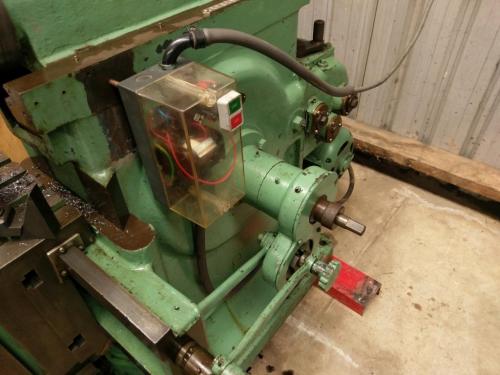
There is a 4-speed gearbox, no stuffing about with belts to change speed.
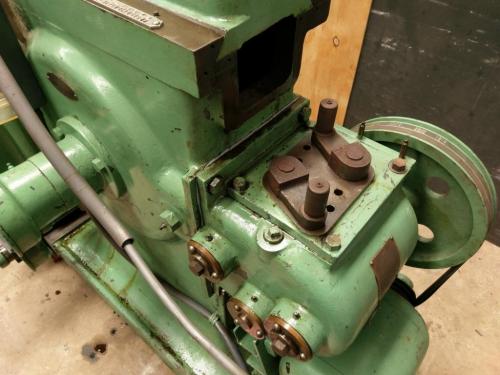
The crossfeed adjustment is fairly primitive, unlock the knob (took me a while to figure out it is l/h threaded) and move the crank pin to the desired offset on the desired side- put it on the wrong side and the crossfeed happens during the cut.
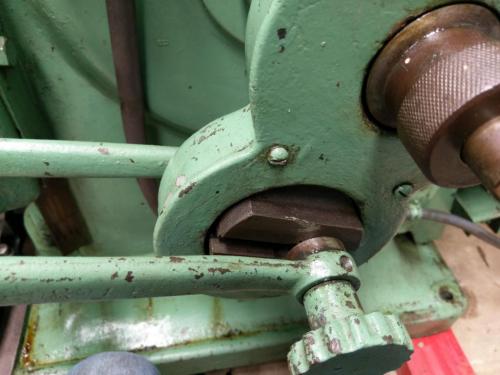
The crossfeed dial graduations each represent .010" of lateral movement. The pawl will take one, two or three teeth per stroke. I put a dial indicator on it while I was playing around this afternoon and it was moving .020, .020, .030, .020, .030.....must have been just on the cusp of the third tooth.
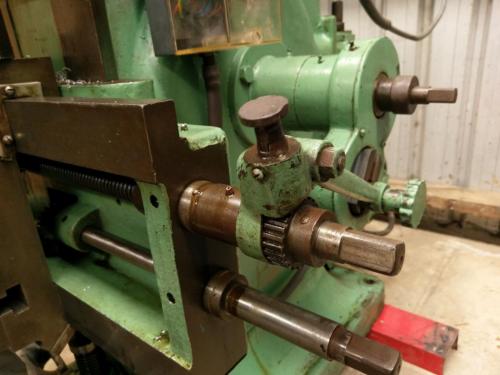
One not-so-great feature is that there is no bottom in it, I'm going to have to put a tray under it to catch oil and muck. It will no doubt leave a permanent mark of it's position on the shed floor.
There is supposed to be a pointer on the ram to indicate the stroke length adjustment, I'll probably make one at some stage but it is no big deal. not exactly a precision adjustment anyway. From what I have read, the stroke should go about 1/4" past the end of the cut to ensure chip clearance, and about 1 1/2" to 2" back from the start to allow the clapper to close

I was experimenting with a big chunk of UB, trying out various tool grinds. It is horrible gummy stuff, and I realised it was flexing in the web and deflecting away from the tool so not going to have much luck with it anyway. Had at it for a while with basically a r/h lathe bit in an armstrong toolholder, i took some of the built-in top rake off when i ground the bit. rough cut reasonably well.

The toolpost has a 3/4" slot in it, it was all burred and banged up so I couldn't quite get a 3/4" toolholder or HSS bit into it. I cleaned up the slot in the mill, now it takes a 3/4" HS bit with a sliding fit. This is one I ground for a finishing tool according to some interweb info.
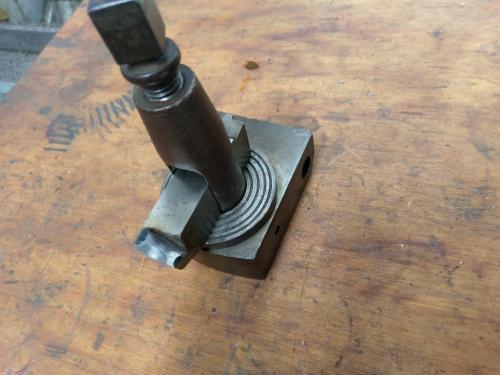
I decided to make a (dodgy) slotting tool out of a surplus boring bar and try an internal keyway in one of the horizontal milling spacers I started months ago. The result was not so great, I think the 6" mill vice is not going to hold tight enough on these. About .040" into the keyway it pushed the spacer out of the vice in slow motion. Left evidence in the vice as well as in the keyway. The shaper looks so harmless with it's slow back-and-forth, but when it pushes a part out of the vice after you have done it up super tight, it gets your respect.
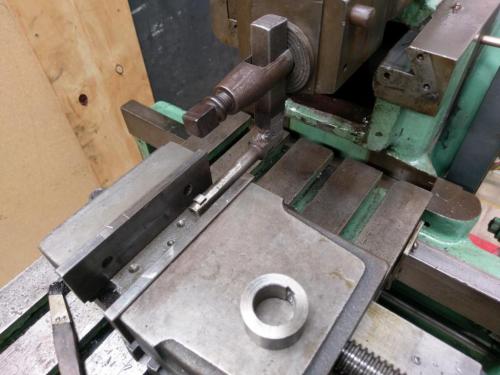
I'll have to make a better work-holding arrangement for slotting.
Bit of an overview first,
As mentioned in the other thread, it was made by MacPhersons Machinery in Australia and seems to be an exact copy of an Elliott / Alba, presumably made here under some sort of license arrangement. I haven't yet established when it was made- the internet is not exactly full of information on these.
I have cleaned all the ways, adjusted all the gibs and had a bit of a play with it.
A few very nice features, the stroke is adjusted with a crank on the working side of the machine, the adjustment spindle takes the same square-bored handle that is used for the X and Y adjustments, the stroke position lock and the topslide tilt.
There is a 4-speed gearbox, no stuffing about with belts to change speed.
The crossfeed adjustment is fairly primitive, unlock the knob (took me a while to figure out it is l/h threaded) and move the crank pin to the desired offset on the desired side- put it on the wrong side and the crossfeed happens during the cut.
The crossfeed dial graduations each represent .010" of lateral movement. The pawl will take one, two or three teeth per stroke. I put a dial indicator on it while I was playing around this afternoon and it was moving .020, .020, .030, .020, .030.....must have been just on the cusp of the third tooth.
One not-so-great feature is that there is no bottom in it, I'm going to have to put a tray under it to catch oil and muck. It will no doubt leave a permanent mark of it's position on the shed floor.
There is supposed to be a pointer on the ram to indicate the stroke length adjustment, I'll probably make one at some stage but it is no big deal. not exactly a precision adjustment anyway. From what I have read, the stroke should go about 1/4" past the end of the cut to ensure chip clearance, and about 1 1/2" to 2" back from the start to allow the clapper to close
I was experimenting with a big chunk of UB, trying out various tool grinds. It is horrible gummy stuff, and I realised it was flexing in the web and deflecting away from the tool so not going to have much luck with it anyway. Had at it for a while with basically a r/h lathe bit in an armstrong toolholder, i took some of the built-in top rake off when i ground the bit. rough cut reasonably well.
The toolpost has a 3/4" slot in it, it was all burred and banged up so I couldn't quite get a 3/4" toolholder or HSS bit into it. I cleaned up the slot in the mill, now it takes a 3/4" HS bit with a sliding fit. This is one I ground for a finishing tool according to some interweb info.
I decided to make a (dodgy) slotting tool out of a surplus boring bar and try an internal keyway in one of the horizontal milling spacers I started months ago. The result was not so great, I think the 6" mill vice is not going to hold tight enough on these. About .040" into the keyway it pushed the spacer out of the vice in slow motion. Left evidence in the vice as well as in the keyway. The shaper looks so harmless with it's slow back-and-forth, but when it pushes a part out of the vice after you have done it up super tight, it gets your respect.
I'll have to make a better work-holding arrangement for slotting.
Lathe (n); a machine tool used in the production of milling machine components.
Milling Machine (n); a machine tool used in the production of lathe components.
Milling Machine (n); a machine tool used in the production of lathe components.





